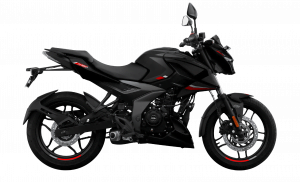Bangladesh Motorcycles industry run was sharply stopped in 2024. After the first 10 months of the year, new motorcycles sales have been 319.441 (-17.0%) and the next months outlook is black as well.
Bangladesh has seen political upheaval with the fall of Sheikh Hasina’s regime, mirroring recent economic turbulence in neighbouring South Asian countries like Sri Lanka and Pakistan.
The country now grapples with slowing GDP growth, currency devaluation, and looming debt, while the interim government works to rebuild political stability and trust in democratic processes, amidst speculation about renewed influence from China and the United States, and how India is now positioned.
Bangladesh’s GDP growth, which had been running persistently between 6 per cent and 8 per cent between the end of the global financial crisis and the start of the pandemic, is now forecast to drop below 6% both this year and next. The national currency, the taka, has dropped sharply against the dollar, loans are falling due to Bangladesh’s many emblematic megaprojects, and parts of the banking sector look shaky.
The motorcycles industry has been a key driver of the country economic development in the last decade, being over 20 times bigger than the four wheeler and representing the only option as private vehicles for 99.9% of people, considering the pro capita income is still among the lowest worldwide.
The annual sales volume reaching over half a million in 2021 and 2022 before to start declining, hit by the huge increase in the vehicles price due to the currency depreciation and the double-digit inflation.
In 2024 the market is even affected by riots and protests, with students calling for reforms and liberty and the regime reacting with weapons and taxes.
After the first 10 months of the year, new motorcycles sales have been 319.441 (-17.0%) and the next months outlook is black as well.

Motorcycles Market Heritage
The two wheelers represent the main individual mobility device in the country and has huge space for growing up in the next decade, in line with a growing per-capita income.
With a population of 167 million people and an annual GDP growth averaging over 7% in the last five years, and high remittance from expatriates, Bangladesh represents one of the World’s Top 5 emerging economy for the next decade. Despite doubled in the last five years, the pro capita income is still among the lowest in the World (US$1.829 in the 2019), but it is projected to double within the next five years.
The economic boom created a huge demand for individual mobility and the two-wheeler industry represents the most efficient solution, following the pathway already tracked by several others South Asian countries.
Fortunately, local governments have embraced this philosophy and have put in place a range of tax initiatives, import policies, incentives to innovation.
A decade ago the objective was to support the start-up of local production, creating barrier to imported vehicles and components, but in the most recent years a more opened view has taken space and the government has reduced duties on imported parts (from 25% to 20%) and on imported models.
Bangladesh, as one of the rare countries in the world with motorcycle engine capacity restrictions, at the end of 2021 decided to follow the Tariff Commission’s recommendation and applications from several new investors, moved up the limits for road motorcycles from 250cc to 500cc opening the market to new opportunities.
The first new entrance was the Indian Royal Enfield, leader in this segment in the entire region. IFAD Motors Ltd. has immediately signed a memorandum of understanding with Royal Enfield to import (and probably locally produce) their product in the country.
Motorcycles Manufacturing
The Indian Bajaj Auto is producing locally since the 2015 and was immediately followed by TVS, Hero Motors, Suzuki and Yamaha.
The last to open a plan was Honda. Indeed, Honda opened its motorcycle plant in November 2018 with a current capacity of 200.000 annual production.
Actually over 80% of two-wheelers sold in Bangladesh are locally manufactured.
In Bangladesh, the import duty is 45% keeping the motorcycles prices about 2.5 times higher than those in India. However, local manufacturers can agree with the government a discount on this duty, if they produce at least one fifth of the bike in the country.















